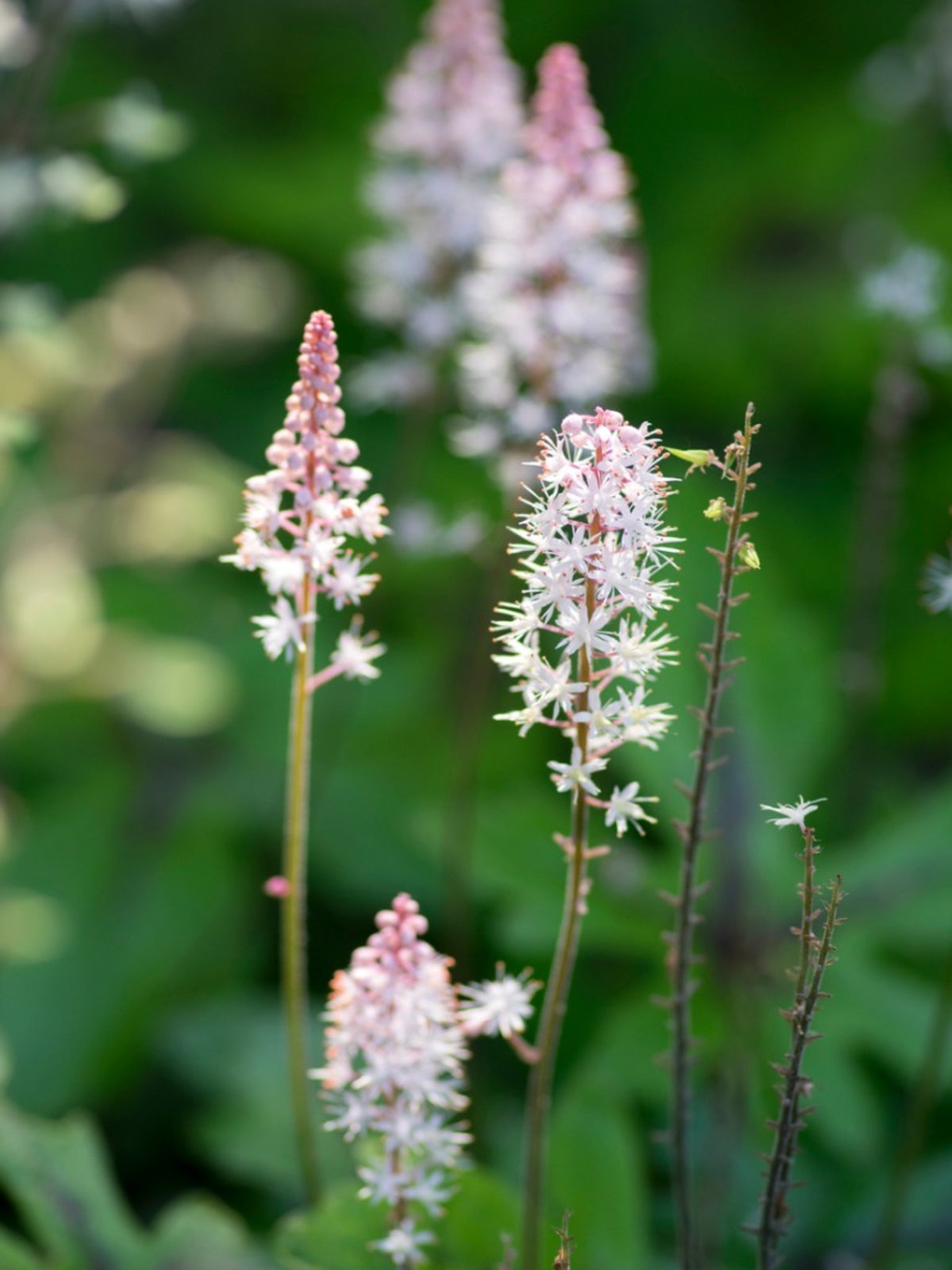Foamflower Care: Growing Tips For Foamflower In The Garden


When looking for native plants for shady moist areas in the landscape, think of planting foamflower in the garden. Growing foamflowers, Tiarella spp., produces fluffy, springtime blooms, which accounts for their common name. Mounding evergreen foliage and minimal foamflower care makes them desirable specimens in USDA plant hardiness zones 3 through 8. Growing foamflowers is quite simple if you give them what they need.
About Foamflowers
Foamflower plants do not get the recognition they deserve, but this may be changing. New cultivars, resulting from crosses between the Eastern and Western native foamflower plants have been marketed in recent years and gardeners are learning some of the benefits of foamflower in the garden, especially the woodland garden.
Foamflower Care
Growing foamflowers have a relatively lengthy bloom, often lasting as long as six weeks when properly located. Foamflower care includes regular watering if plants are not located in a consistently moist area. Besides moisture, foamflower plants like to grow in a richly organic soil, similar to their native habitat in the woodlands. Light conditions for foamflower plants should be partial to heavy shade in southern zones. A couple hours of morning sun is the most that should be available to these plants, although they may be planted in partial sun in more northern areas. Their short, mounding habit makes them easy to locate in areas to be shaded by taller plants. Pink and white foamy blossoms rise above the mounding foliage, usually a few inches (8 cm.) to a foot (31 cm.) in height. The attractive foliage can stand alone when flowers are spent on foamflower plants. Now that you've learned about foamflowers and tips on growing them, look for the plants at local nurseries or garden centers. Once you purchase begin growing foamflowers, you can collect seed for future seasons.
Gardening tips, videos, info and more delivered right to your inbox!
Sign up for the Gardening Know How newsletter today and receive a free copy of our e-book "How to Grow Delicious Tomatoes".

Becca Badgett was a regular contributor to Gardening Know How for ten years. Co-author of the book How to Grow an EMERGENCY Garden, Becca specializes in succulent and cactus gardening.
-
 Looking For Plants To Give You The Soft And Fuzzies? Try These 5 Fuzzy Leaf Plant Options
Looking For Plants To Give You The Soft And Fuzzies? Try These 5 Fuzzy Leaf Plant OptionsLovers of texture, drama, silver foliage and tactile plants will adore these special sensory garden additions. These fuzzy leaf plant options will leave you all aglow
By Susan Albert
-
 Get Ready For A Summer Of Hummers! Grow These Full Sun Hummingbird Plants and Flowers
Get Ready For A Summer Of Hummers! Grow These Full Sun Hummingbird Plants and FlowersIf you’re lucky enough to enjoy a sunny backyard, make sure you are maxing out on your pollinator opportunities and grow these full sun hummingbird plants and flowers
By Tonya Barnett